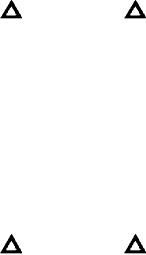
TM 5-2420-230-24-2
Air Intake System - General Information
B3.9 and B5.9 Series Engines
Page 10-14
Section 10 - Air Intake System - Group 10
Air Intake System - General Information
The engine was designed as a turbocharged engine, but a naturally aspirated version of the B engine is available for
industrial applications.
Air is pulled into the engine from an air filter. Clean air is very important to the life of the engine. Ingested dust and
dirt can very quickly damage the cylinders.
Make sure that an excellent-quality air cleaner is used and that it is periodically replaced according to the
manufacturer's recommendations.
Intake air for the naturally aspirated engine flows from the air cleaner to the intake manifold. From the intake manifold,
the air is pulled into the cylinders and used for combustion. After combustion it is forced out of the cylinders and through
the exhaust manifold.
On the turbocharged engines the intake air is drawn through the air cleaner, into the compressor side of the turbo-
charger, and then through the crossover tube and into the intake manifold. From the intake manifold, the air is forced
into the cylinders and used for combustion. Energy from the exhaust gases is utilized by flowing the exhaust through
the exhaust side of the turbocharger to drive the turbine wheel. The turbine wheel and shaft drive the compressor wheel,
which forces more air into the cylinders for combustion. The additional air provided by the turbocharger allows more
fuel to be injected to increase the power output from the engine.
On turbocharged--aftercooled engines, intake air from the turbocharger flows through the cooling fins of the aftercooler
before entering the intake manifold. The cooled air becomes more dense and contains more oxygen, which allows more
fuel to be injected, further increasing the power output from the engine.
The 1991 to 1994 automotive engines use a chassis-mounted charge air cooler instead of an engine-mounted
aftercooler to provide cooler charge air to the engine to improve engine performance and reduce emissions. This system
also uses large-diameter piping to transfer the air from the engine turbocharger to the charge air cooler; then returns
the air from the charge air cooler to the engine intake manifold.
NOTE: The long-term integrity of the charge air cooling system is the responsibility of the vehicle and component
manufacturers.
Some turbocharged engines use a wastegated turbocharger to limit the maximum boost pressure that the turbocharger
can develop. Wastegate operation is controlled by an actuator that senses compressor pressure and balances it against
a preset spring-load. The wastegate valve is located in the turbine inlet passage. When open, it diverts a portion of
the exhaust gas away from the turbine wheel, thereby controlling the shaft speed and boost. This also allows for better
boost at lower speeds.
CAUTION
Do not tamper with the turbocharger because it is a performance part. The wastegate bracket is an integral part
of the turbocharger. Tampering with the wastegate components can reduce durability by increasing cylinder
pressure and thermal loading due to incorrect inlet and exhaust manifold pressure. Poor fuel economy and
failure to meet regulatory emission laws can result. Increasing the turbocharger boost will not increase engine
power.
The turbine and compressor wheels and shaft are supported by two rotating bearings in the bearing housing. Passages
within the bearing housing direct filtered, pressurized engine oil to the shaft bearings and thrust bearing. The oil is
used to lubricate and cool the rotating components to provide for smooth operation. The oil then drains from the bearing
housing to the engine sump through the oil drain line. A restricted or damaged oil drain line can cause the turbocharger
bearing housing to be pressurized, causing oil to leak past the seals.
NOTE: An adequate supply of good, filtered oil is very important to the life of the turbocharger. Make sure that an
excellent-quality oil is used and that it and the oil filter are changed according to the maintenance recommendations.
CAUTION
A catalyst is installed on all EPA- and CARB-approved automotive applications. Lubricating oil blending is not
permitted. It will plug up and eventually damage the catalyst. High-sulfur fuels must not be used with the
catalyst. No welding or modifications of the catalyst are permitted without permission of the catalyst manu-
facturer.
L-1138

